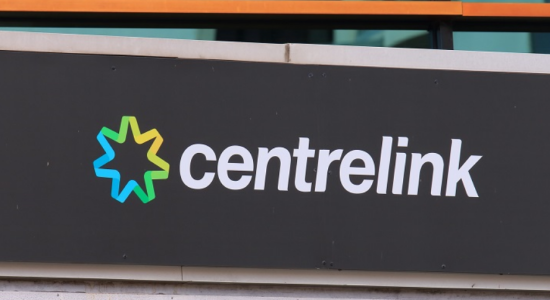ATO warns 82 per cent of Aussies make Centrelink payment mistake
By
Gian T
- Replies 1
When it comes to tax time, most of us think we’ve got things under control—especially if we’re just dealing with the usual suspects: pensions, super, and maybe a bit of interest from the bank.
But suppose you’ve received a Centrelink payment due to a natural disaster this year.
In that case, the Australian Taxation Office (ATO) has a warning: you might be making a costly mistake on your tax return and wouldn’t be alone. A whopping 82 per cent of Aussies recently got it wrong!
Let’s break it down and make sure you’re not one of the many who could be missing out or, worse, facing a nasty surprise from the taxman.
Natural disasters—like floods, cyclones, and bushfires—have sadly become a regular part of life in Australia.
When disaster strikes, the government steps in with various support payments to help people get back on their feet.
These payments can come from Services Australia (Centrelink) and are often a lifeline for those affected.
But here’s where it gets tricky: not all disaster payments are treated the same way at tax time.
Some are tax-free, while others must be declared as assessable income.
And with so many different grants and allowances, it’s easy to see why so many people are getting it wrong.
The ATO says the answer depends on the type of support payment you received. Here’s a quick guide:
Tax-free payments (no need to declare):
For most other disaster payments, including those related to more recent events like ex-Tropical Cyclone Alfred (which hit northern NSW and southeast Queensland in February), you do need to include them in your tax return.
These payments are considered assessable income and could affect how much tax you owe or your eligibility for other benefits.
Common disaster payments you might have received:
The ATO is keeping a close eye on these, so don’t be tempted to leave them out.
In some circumstances, you can claim deductions on disaster payments. If you used the payment to:
Getting it wrong can have serious consequences. If you don’t declare assessable payments, you could incur a tax bill, lose out on other benefits, or even face penalties.
On the flip side, if you declare a payment that’s actually tax-free, you might pay more tax than you need to!
ATO Assistant Commissioner Tim Loh says, ‘We know it’s confusing, but it’s important to get it right. If you’re not sure, check the ATO website or speak to a registered tax agent.’
Hank Jongen, spokesperson for Services Australia, says there was a lot of confusion after Cyclone Alfred, with many people unsure about what to do at tax time.
‘We work closely with the ATO to make sure people have the information they need, but if you’re ever unsure, please reach out for help.’ he said.
If you’ve been affected by floods, cyclones, or bushfires and received a payment from Centrelink or another source, double-check whether you need to declare it.
It could save you a lot of hassle down the track.

Have you received a disaster payment and been unsure what to do at tax time? Did you get advice from Centrelink or the ATO? Share your stories and tips in the comments below.
But suppose you’ve received a Centrelink payment due to a natural disaster this year.
In that case, the Australian Taxation Office (ATO) has a warning: you might be making a costly mistake on your tax return and wouldn’t be alone. A whopping 82 per cent of Aussies recently got it wrong!
Let’s break it down and make sure you’re not one of the many who could be missing out or, worse, facing a nasty surprise from the taxman.
Natural disasters—like floods, cyclones, and bushfires—have sadly become a regular part of life in Australia.
When disaster strikes, the government steps in with various support payments to help people get back on their feet.
These payments can come from Services Australia (Centrelink) and are often a lifeline for those affected.
But here’s where it gets tricky: not all disaster payments are treated the same way at tax time.
Some are tax-free, while others must be declared as assessable income.
And with so many different grants and allowances, it’s easy to see why so many people are getting it wrong.
The ATO says the answer depends on the type of support payment you received. Here’s a quick guide:
Tax-free payments (no need to declare):
- Cyclone Seroja (11 April 2021)
- 2021 Storms and Floods Recovery grant
- 2019–2020 Bushfires Relief Recovery payment
- 2019 North Queensland floods recovery grants
- 2019 Restocking, replanting or farm infrastructure grants
For most other disaster payments, including those related to more recent events like ex-Tropical Cyclone Alfred (which hit northern NSW and southeast Queensland in February), you do need to include them in your tax return.
These payments are considered assessable income and could affect how much tax you owe or your eligibility for other benefits.
Common disaster payments you might have received:
- Disaster Recovery Allowance (DRA): Up to 13 weeks of income support for people who lost income due to a disaster. Paid at the JobSeeker or Youth Allowance rate (up to $1,011.50 per fortnight, or around $6,574 over 13 weeks).
- Australian Government Disaster Recovery Payment (AGDRP): A one-off payment of $1,000 per adult and $400 per child for those significantly affected by a disaster (e.g., if your home was destroyed or badly damaged).
- Emergency/Personal Hardship Assistance Grants: Up to $900 for families to cover essentials like food, clothing, and medicine.
- Essential Services Hardship Assistance: Up to $750 for families who lost essential services for more than five days.
- Essential Household Contents Grants: Up to $5,300 for families to replace destroyed household items.
- Structural Assistance Grants: Up to $80,000 for uninsured, income-tested owner-occupiers to repair or replace a damaged home.
The ATO is keeping a close eye on these, so don’t be tempted to leave them out.
In some circumstances, you can claim deductions on disaster payments. If you used the payment to:
- Buy replacement trading stock or new assets for your business
- Repair your business premises or fit-out
- Pay for other business expenses
Getting it wrong can have serious consequences. If you don’t declare assessable payments, you could incur a tax bill, lose out on other benefits, or even face penalties.
On the flip side, if you declare a payment that’s actually tax-free, you might pay more tax than you need to!
ATO Assistant Commissioner Tim Loh says, ‘We know it’s confusing, but it’s important to get it right. If you’re not sure, check the ATO website or speak to a registered tax agent.’
Hank Jongen, spokesperson for Services Australia, says there was a lot of confusion after Cyclone Alfred, with many people unsure about what to do at tax time.
‘We work closely with the ATO to make sure people have the information they need, but if you’re ever unsure, please reach out for help.’ he said.
If you’ve been affected by floods, cyclones, or bushfires and received a payment from Centrelink or another source, double-check whether you need to declare it.
It could save you a lot of hassle down the track.
Key Takeaways
- The ATO has warned that most Australians are getting it wrong when it comes to declaring Centrelink natural disaster payments on their tax returns, with 82 per cent of business owners incorrectly reporting their income.
- Only a select list of natural disaster relief payments from Services Australia is tax-free; the rest, including recent cyclone and flood assistance, must be included as assessable income.
- You may be able to claim deductions on these payments if the money was used for business expenses, such as replacing trading stock or repairing business premises.
- Any disaster-related assistance from private funds, charitable groups, or crowdfunding received to help with business expenses also needs to be declared on your tax return.








